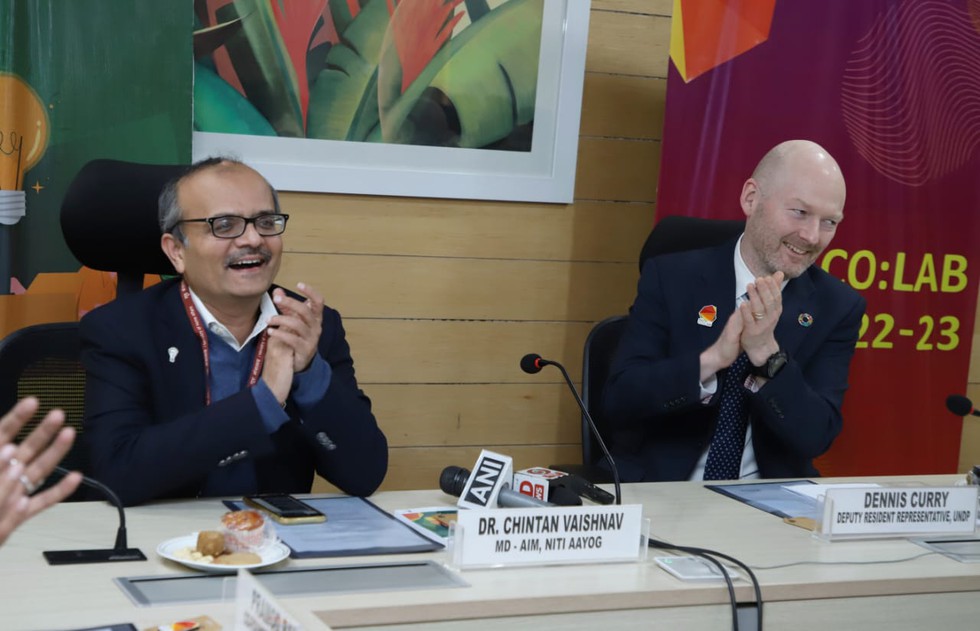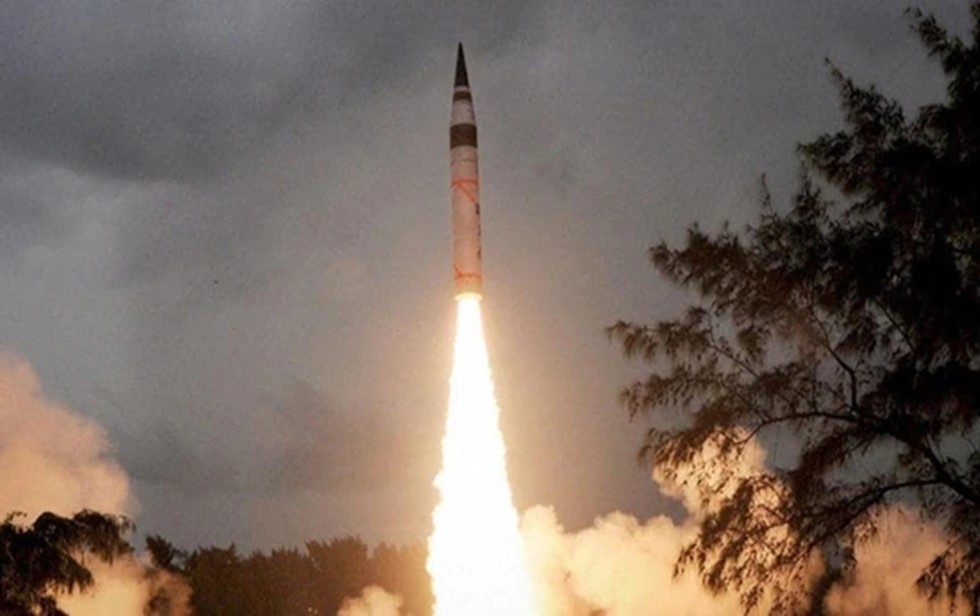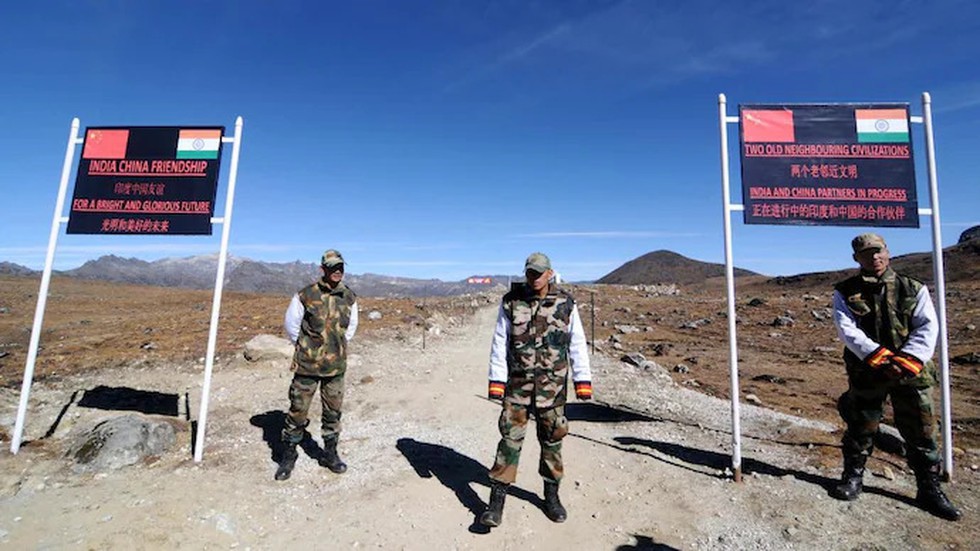1. Youth Co:Lab
The 5th edition of Youth Co:Lab was launched on December 15th 2022.

About:
- Youth Co:Lab is an initiative launched in 2019 by UNDP India in partnership with Atal Innovation Mission, NITI Aayog.
- Youth Co:Lab was co-created in 2017 by UNDP and the Citi Foundation, Youth Co:Lab.
- It is a multi-dimensional and multi-level response to tackle the challenges young people face by positioning youth at the forefront in finding solutions to global challenges tackling Sustainable Development Goals (SDGs).
- It aims to establish a common agenda for Asia-Pacific countries to invest in and empower youth to accelerate implementation of the Sustainable Development Goals (SDGs) through leadership, social innovation, and entrepreneurship.
- The Youth Co:Lab initiative, till date, has been implemented in 28 countries and territories, reaching over 200,000 participants, benefitting more than 11,000 young social entrepreneurs and supporting over 1,240 social enterprises.
- Through Youth Co: Lab, 30 early-stage start-ups would be supported by the springboard programme, and the best would be provided a seed grant for scaling up their start-up.
- The 5 focus thematic areas for Youth Co: lab 2022-23 are:
- Digital and Financial Literacy for Youth
- Gender Equality and Women Economic Empowerment
- Developing FinTech Solutions focused on Biodiversity Conservation
- Promoting Biodiversity-friendly Lifestyles through Technological Solutions in Finance
- Accelerating Circular Economy through Upcycling Innovations
- Behavioural Nudges for LiFE ( Lifestyle For Environment)
Source : PIB
2. Agni V
India has successfully conducted night trials of nuclear-capable ballistic missile Agni V.

About:
- Type: It is a surface-to-surface Nuclear Capable Ballistic missile.
- Warhead: It can carry both nuclear and traditional weapons.
- Range: Agni-V, with a range of over 5,000 km, is India’s longest-range ballistic missile and can reach most parts of China, making it the mainstay of India’s triad to deliver nuclear weapons.
- Dimensions: it is a 17-meter long missile with two-meter diameter.
- Development: It has been indigenously developed by Defence Research and Development Organisation (DRDO).
- Technologies: Agni-V is the most advanced missile in the Agni series featuring many new technologies, including the very high accuracy Ring Laser Gyro based Inertial Navigation System (RINS) and Micro Navigation System (MINS) which improves the accuracy of the missile.
- With the Agni-V, India joins an elite club of countries like US, Russia, the UK, France and China, which boast Inter-Continental Ballistic Missile (ICBM) capabilities.
Source : All India Radio
3. Doklam
China has recently set up a ropeway near the Torsa Nala near Doklam and is strengthening roads and other infrastructure along the entire eastern sector.

About Doklam:
- Doklam, or Donglang in Chinese, is an area spread over less than a 100 sq km comprising a plateau and a valley at the trijunction between India, Bhutan and China.
- It is surrounded by the Chumbi Valley of Tibet, Bhutan’s Ha Valley and Sikkim.
- Doklam is strategically located close to the Siliguri Corridor, which connects mainland India with its north-eastern region.
- The corridor, also called Chicken’s Neck, is a vulnerable point for India.
Areas of differing perception:
- These are the areas where both sides patrol the area upto their claim lines.
- This “has been the trend since 2006”.
- India and China have mutually agreed disputed areas and areas of differing perception along the 3,488 km-long LAC.
- For instance in eastern Ladakh, there are two mutually agreed disputed areas, Trig Heights and Demchok, while there are 10 areas of differing perception.
- Similarly, Yangtse is one of the eight major friction points in the eastern sector.
Source : The Hindu
4. India Water Impact Summit
Union Minister for Jal Shakti recently inaugurated the 7th Edition of India Water Impact Summit.

About 7th Edition of India Water Impact Summit:
- The Summit aims at giving an insight into the potential causes for divergence and formulating strategy to achieve convergence.
- It is organised by NITI Aayog at Dr Ambedkar International Centre (DAIC), 15 Janpath, New Delhi.
- Experts from the country and abroad are discussing ways to protect the small rivers in large river basins.
- Theme:
- ‘Restoration and Conservation of Small Rivers in a Large Basin’ with emphasis on the select aspects of ‘Mapping and Convergence of 5Ps’ - People, Policy, Plan, Programme and Project.
- Finance Forum:
- The summit will also host the “Finance Forum”, a special track that will bring together global financial institutions and investors interested in river restoration and conservation programmes.
- The 2022 summit, like earlier summits, will also provide an opportunity to dozens of technology and innovation companies from around the world that are keen to bring their solutions to India to address various issues and concerns pertinent to our river basins.
Source : All India Radio
5. Exercise “SURYA KIRAN”
The 16th Edition of exercise “SURYA KIRAN” will be conducted at Nepal Army Battle School, Saljhandi, and continue up to 29 December 2022.

About:
- It is an Indo-Nepal joint army training exercise.
- It is conducted annually between India and Nepal with the aim to enhance inter-operability in jungle warfare and counter-terrorism operations in mountainous terrain and Humanitarian Assistance and Disaster Relief (HADR) under UN mandate.
- Nepal Army soldiers of Shree Bhawani Baksh Battalion and Indian Army soldiers from the 5 GR are participating in the exercise.
Source : All India Radio
6. Vijay Diwas
The Nation is celebrating Vijay Diwas on December 16 to commemorate India's victory over Pakistan in 1971 Bangladesh Liberation war.

About Vijay Diwas:
- On December 16, 1971, the chief of the Pakistani forces, General Amir Abdullah Khan Niazi, along with 93 thousand troops, had surrendered unconditionally to the allied forces consisting of Indian Army and Mukti Bahini, led by Lieutenant General Jagjit Singh Aurora in Dhaka after their defeat in the Liberation war.
- The war resulted in the birth of Bangladesh, which was then East Pakistan.
- The day is also observed in Bangladesh as ‘Bijoy Dibos’, marking the country’s formal independence from Pakistan.
- India had also held 93,000 prisoners-of-war by the end of war on December 16.
- Eight months after the war, in August 1972, India and Pakistan settled the Shimla agreement.
- Under the agreement, India agreed to release the 93,000 Pakistani prisoners-of-war.
Source : PIB





























































































































































.png)
.png)
.png)
.png)
.png)


.png)
.png)
.png)





.png)
.png)






.png)
.png)
.png)
.png)
.png)
.png)
.png)
.png)
.png)

.png)







.png)
.png)


.png)
.png)
.png)


.png)

.png)
.png)





.jpg)

.png)
.png)


.png)

.png)
.png)
.png)

.jpg)

.jpg)


.png)

.png)
.png)
.png)
.png)
.png)
.png)
.png)
.png)
.png)
.png)




.png)

.png)





.png)
.png)
.png)
.png)
.png)
.png)
.png)
.png)
.png)
.png)
.jpg)
.jpg)

.png)
.png)
.png)
.png)
.png)
.png)
.png)
.png)
.png)
.png)
.png)
.png)
.png)
.png)
.png)
.png)
.png)
.png)
.png)
.png)
.png)
.png)



.png)
.png)

.jpg)
.jpg)


.jpg)
.jpg)
.jpg)
.jpg)
.jpg)

.jpg)








.jpg)
.jpg)
.jpg)
.jpg)
.jpg)

















.jpg)
.jpg)







.jpg)


















.jpg)
.jpg)



























































































.jpg)
.jpg)


























.jpg)

.jpg)










.jpg)








.jpg)




.jpg)










.jpg)


















.jpg)












































.jpg)














.jpg)
.jpg)
.jpg)





.jpg)

.jpg)
.jpg)





































































.jpg)


































.jpg)
.jpg)
















































.jpg)












.jpg)


.jpg)




.jpg)
.jpg)
.jpg)

.jpg)
.jpg)
.jpg)
.jpg)

.jpg)
.jpg)
.jpg)

.jpg)
.jpg)
.jpg)
.jpg)
.jpg)
.jpg)
.jpg)
.jpg)

.jpg)


.jpg)
.jpg)
.jpg)
.jpg)
.jpg)
.jpg)
.jpg)
.jpg)
.jpg)
.jpg)











.jpg)
.jpg)





.jpg)
.jpg)
.jpg)
























.jpg)
























.jpg)









.jpg)
.jpg)







.jpg)
.jpg)









































.jpg)
.jpg)
.jpg)
.jpg)
.jpg)

.jpg)
.jpg)
.jpg)
.jpg)
.jpg)


.jpg)
.jpg)
.jpg)
.jpg)
.jpg)

.jpg)
.jpg)
.jpg)
.jpg)
.jpg)
.jpg)
.jpg)
.jpg)
.jpg)
.jpg)
.png)

.png)
.png)

.png)
.png)
.png)
.png)


.jpg)
.jpg)

.jpg)
.jpg)
.jpg)

.png)
.png)
.png)
.png)
.png)
.png)
.png)

.png)
.png)
.png)
.png)
.png)
.png)
.png)
.png)
.png)
.png)





































































-min.png)



.png)




.png)








































